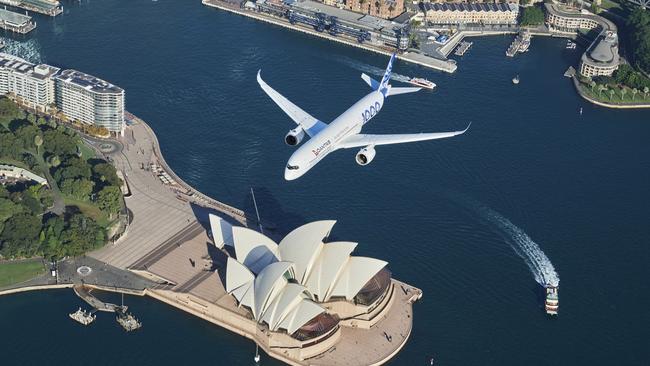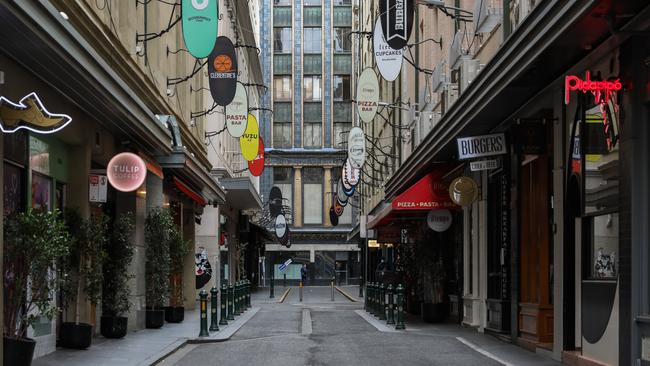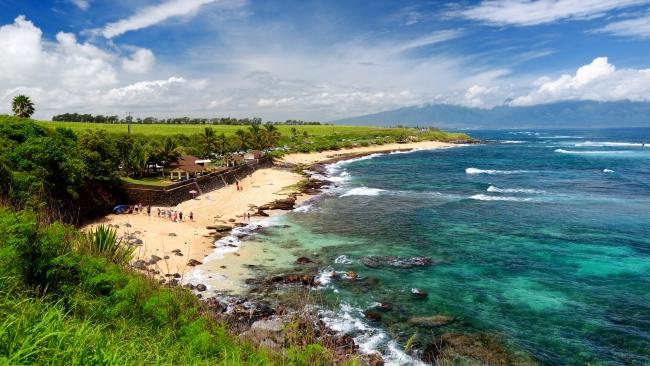Where young Aussies are travelling this year
Young people are ready to travel but it's hard to get an international flight.

Young people are ready to travel but it's hard to get an international flight.
Young people are ready to travel internationally again but there aren't many flights and it costs a lot of money.
Tourism experts say there's been "a real market shift" in who is willing to travel overseas. While baby boomers are more likely to travel domestically 'post-pandemic', younger Australians, particularly millennials, are more willing to take risks and jet off overseas.
Popular booking site Webjet said 25 to 35 year-olds were now the biggest cohort of international travellers, overtaking 45 to 55 year-olds, who held the honour pre-pandemic.
A spokesperson said overall travel was still down compared to 2019, which seemed to be a result of "ongoing reduced capacity" of international flight services.

International airline capacity is sitting around the 40% mark, which experts say should increase to about 60% in the next few months. Qantas, for example, is planning for international flight capacity to climb to about 70 per cent of pre-pandemic levels by the end of September.
"With international travel once again becoming a priority, there has been a clear shift in the age demographic of Webjet users ... With so many cancelled vacations throughout the last two years, this really highlights that younger travellers are the most eager to make up for lost time and lead the way in re-exploring the world," Webjet OTA CEO David Galt said.
The top destinations for 25 to 35 year-old Webjet users included Bali (10%), London (7%), Los Angeles (5%), Singapore (3%) and Manila (3%).

Flight Centre Managing Director James Kavanagh said "leisure" travel (as opposed to business travel) was tracking above 50% of pre-pandemic levels, and it continues to grow.
He said when international borders first opened people were mostly travelling overseas to visit family but they were now starting to go on vacations.
However international capacity is still well below pre-covid levels, meaning it can be hard to find a seat on a plane travelling overseas, and "there's limited capacity to where you can go", Kavanagh said.
"The demand is there, so we will see more of a ramp up as we get more capacity," he said.
He added more young people were now travelling as singles or in smaller groups for a more personalised experience and people were spending more money on trips after a two year hiatus.
Australia was still the most popular place to travel for under 30s at about 50%.
During May alone, Contiki Australia experienced a 100% increase in bookings from the same month pre-pandemic, with most of them heading to Europe.
And where are they going?
Flight Centre's top 10 destinations for under 30s, FY19:
1. Australia - 35%
2. USA - 10%
3. Indonesia (Bali) - 6.7%
4. UK - 5.7%
5. NZ - 5.4%
This was followed by Thailand, Japan (not really open to international travellers), Canada, Singapore and Greece.
Flight centre's top 10 destinations for under 30s, FY22:
1. Australia - 50%
For under 30s, the top domestic destinations include Melbourne, Sydney and Brisbane, but the Gold Coast, tropical north Queensland and WA were also popular.


2. UK - 9%

3. USA - 7%


4. NZ - 3%

5. Italy - 2%

This was followed by Indonesia, India, Greece, Fiji and France.
Flight Centre acknowledged that Indonesia had only recently reopened and would likely account for a larger share of bookings for under 30s in the coming months.
What's stopping young people from travelling?
"With our younger segments, the biggest issue they're going to face is pricing," UQ Business School Associate Professor Gabby Walters said.
"(Airlines) are managing their yield. So the less flights there are, the more demand there is and the higher the price people will pay."
Dr Walters, a tourism crisis recovery expert, said although international travel was a "rite of passage" during a gap year or after uni and was "in our nature" as an isolated country, it's just not easy at the current time.
"International travel right now and it's hard and it's complicated and it's inconvenient and expensive ... The joy to plan has been really taken out of it," she said.
Dr Walters said there was a lack of resources, staff, testing requirements, flight cancellations and delays, as well as confusion around Covid travel insurance and fears around the cost of getting medical treatment overseas. Some countries in Europe don't accept international vaccination certificates and might turn you around at the borders.
According to the latest poll from Expedia, cost of travel (for 65% of 18-24 year olds) and financial constraints (for 46% of 25 to 45 year olds) was the leading consideration for when and where to travel, well above covid-19 considerations or testing requirements for various countries.
Dr Walters expected there to be an influx in overseas bookings and then a reduction as people realised how difficult it is.


